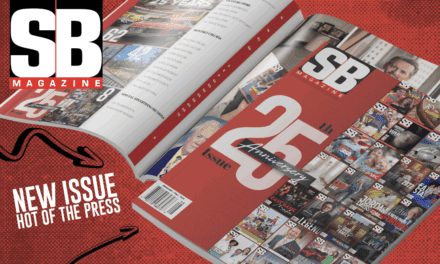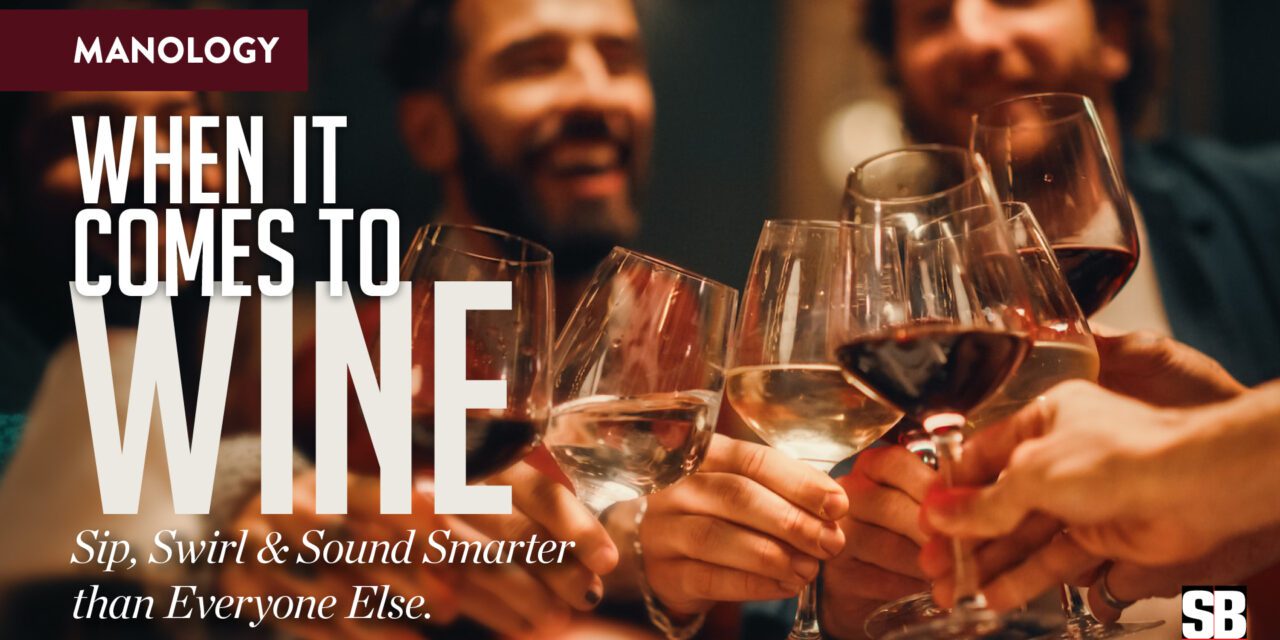BY ADAM BAILEY
When it Comes to Wine—Sip, Swirl and Sound Smarter than Everyone Else.
Drinking wine is easy. Describing wine? Not so much. If you’ve ever stared down a long aisle of bottles at a wine shop or been handed a wine list and felt a bit lost, you’re not alone. Learning about wine takes patience, experience and—most importantly—time.
Let’s be honest, at some point we men are expected to possess the knowledge to order and appreciate wine. But getting to know your reds and whites isn’t so black and white. Before diving deeper into the bottle and learning about the finer points of tannins, stem lengths or booking a flight to Napa Valley—let these basics help you confidently order and enjoy your next glass of wine.
Shop Small, Specialized.
If you’re looking to expand your palate and discover something new, try a local specialized wine shop. Grocery stores generally carry wine from the largest distributors—who do an excellent job of creating labels, names, and brands to market to specific demographics, even when the wine doesn’t vary that much. Let the shop clerk know your price point and start taking notes.
What a Wine’s “Vintage” Means.
A wine’s “vintage” is the year in which it was bottled. Many wine novices assume if they’re holding two bottles of the same wine from different vintages, the older wine will be better.
Not true. Many more people are drinking wine these days than even 20 years ago, so winemakers are mass producing wines with methods that ensure they’re delicious right when they’re released. In fact, if you inspect the shelves in wine stores, you may see two vintages of the exact same wine, and the younger is more expensive.
Why You Should Swirl Your Wine.
Ever see people spin and swirl wine around in their glass before taking a sip? It may look ridiculous, but if you don’t swirl, you might as well buy the cheapest wine on the list. Swirling helps release the wine’s aroma, and that’s where a lot of the flavor comes from.
To swirl the wine, grab your glass by the base of the stem with your index finger and thumb. Now pretend you’re drawing small circles with it on the tabletop.
Why You Should Let Your Wine Breathe.
When you pop a wine bottle’s cork, oxygen flows into the bottle and changes how the wine tastes. This is called “decanting” the wine, or letting it breathe. Many people think giving full-bodied red wines some time to breathe—anywhere from a few minutes to a few hours—improves their flavor. (White wines aren’t decanted.)
If you open the bottle and the wine tastes a little too sharp or edgy, let it sit for a couple minutes. You may find it tastes better. Some fine wines may take longer to fully “open up” and taste their best. So, if you’re treating guests to a rare bottle, you may need to open it long before they arrive. At most restaurants, if the wine really needs to breathe, the staff will decant it, which speeds up the process. If it’s an inexpensive bottle, it’ll breathe in your glass and be fine after 5 minutes.
The Two Crowd Pleasers.
A Pinot Noir and Riesling are the red and white that are the easiest to pair with food. If you’re hosting a party, or in charge of ordering for a table, these foolproof bottles will be the safest choices. And when the menu gets spicy, exotic, or you’re seeing things you don’t recognize in a language you don’t speak, venture back to these basics.
Go Ahead, Cheap Out!
“This one will make me look cheap,” we’ve all likely thought when looking at an inexpensive bottle on a wine list. But that’s likely not a bad thing, as restaurants know it looks better to order the second most inexpensive wine. Therefore, if you order the bottle with the lowest price tag, you’re still ordering wine that the restaurant deems worthy of its guests.









